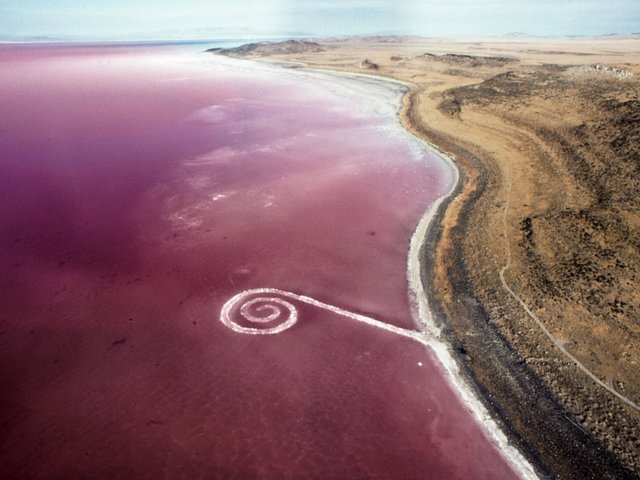The Great Salt Lake in Utah, home to Robert Smithson’s Spiral Jetty, is facing the most severe drought in its history. Water levels are “inches” from the historic low set in 1963, says Bonnie Baxter, the director of the Great Salt Lake Institute. As a result, the pink salt-encrusted basalt rocks of Spiral Jetty are perhaps the most exposed they have ever has been—the 1,500ft-long work was constructed in 1970 during a drought and subsequently submerged for more than three decades before re-emerging in 2004.
However, the consensus among the three organisations that look after the work (the Dia Art Foundation in New York, the Great Salt Lake Institute and the Utah Museum of Fine Arts) is that there is no need to take direct action to protect the work. “The current thinking by most is that Robert Smithson would have loved to see the environmental changes that occur around his artwork, so there is no real talk of intervention,” Baxter says. Smithson died in a plane crash in 1973 aged 35.
A spokesman for Dia confirms that the “severe drought” has affected Spiral Jetty, but adds: “While we will continue to work with our partners to maintain the site, there are no plans for any intervention.”
The lake level has naturally fluctuated over the past 160 years since records began, but recent development in Utah has further diverted water from the lake. “There’s concern from an ecological point of view that the lake is shrinking,” Baxter says.
One solution that has recently been approved is to rebuild part of the causeway that separates the north and south arms of the lake, which will re-establish a small flow of water between the two sections. Spiral Jetty is located in the north arm, where the water is lower and pinker in hue. The exchange of water will “not impact the colour of the water around Spiral Jetty”, Baxter says, nor is it likely to radically alter the water levels. Smithson specifically chose the site Rozel Point because he liked the dark pink colour of the lake on the northeast shore.



